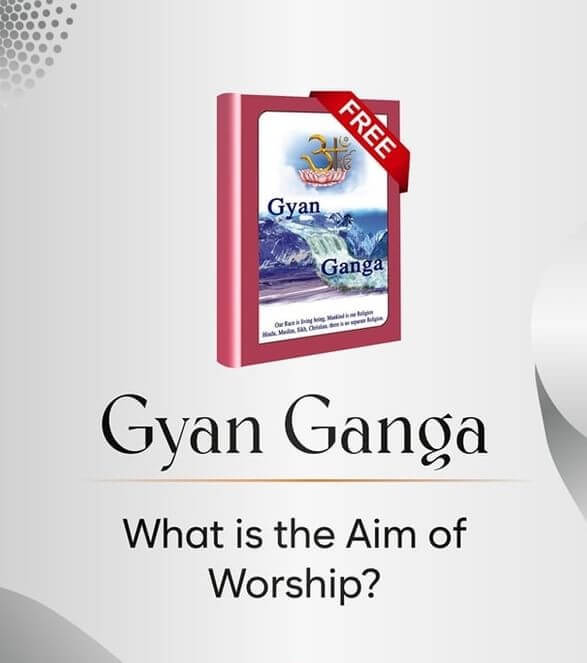Who is the Supreme God?
Help & Information / Who is the Supreme God?
Who is the Supreme God?
Who is the Supreme God? What is He Like? Where Does He Live? How is He Attained? Who Has Seen Him?
According to the knowledge provided in Gyan Ganga, Supreme God is a definite entity with a form, not formless as commonly believed. He is distinct from the deities we typically worship, such as Brahma, Vishnu, and Shiv. Various scriptures, including the Vedas, Bhagavad Gita, and Puranas, explicitly mention the identity, nature, and qualities of the Supreme God, His abode, and the way to attain Him.
Who is the Supreme God?
The Supreme God is identified as KavirDev (Kabir). He is the creator of the entire universe and beyond, the one who sustains everything, and the ultimate destination for souls seeking liberation. This is corroborated by references in Bhagavad Gita (18:62) where Lord Krishna advises Arjun to seek refuge in the Supreme God who will grant ultimate peace and salvation.
Similarly, the Rigveda (10:90:2-3) mentions the presence of a Supreme Power who is beyond the cycle of birth and death, a sovereign entity who controls everything.
What is He Like?
Gyan Ganga explains that Supreme God is not an abstract energy or force; He has a definite form and appearance. This is evident from various scriptures:
- In Yajurveda Chapter 40 Verse 8, it is stated that God is free from sin, hunger, and sorrow, yet He has a form and resides in a visible realm.
- In Rigveda 10:4:3, it mentions, "God walks and talks, sleeps and eats but is beyond human limitations."
Thus, the Supreme God, though possessing a human-like form, is beyond all worldly constraints.
Where Does He Live?
The Supreme God resides in an eternal, divine realm known as Satlok, also referred to as the "Eternal Abode." This place is free from suffering, birth, and death and is the ultimate destination for souls that attain liberation. In Bhagavad Gita (15:6), Lord Krishna mentions, “That eternal place which is self-illuminated, where there is no need for the sun or moon, and those who reach there never return to this world.”
This verse points towards Satlok, the supreme abode of God, where He eternally resides and offers bliss to the liberated souls.
How is He Attained?
Attaining the Supreme God requires following the correct spiritual path, which can only be revealed by a Complete Saint. In Bhagavad Gita (4:34), Krishna emphasizes the importance of approaching a knowledgeable saint who can impart the truth about God.
Gyan Ganga explains that Supreme God can be attained only by taking refuge in Him through the true spiritual practices, which include chanting the true mantra (Naam) revealed by a Complete Saint. Merely worshipping Brahma, Vishnu, Shiv, or performing rituals does not lead to salvation. Instead, one must seek initiation from a true saint who has seen and knows the Supreme God.
Who Has Seen Him?
Saints like Guru Nanak Dev Ji, Garib Das Ji (Vill Chhudani), Dharam Das ji, Dadu ji, Gheesa Das ji, are known to have directly seen and communicated with the Supreme God. According to Gyan Ganga, Kabir Sahib Himself came to this world to impart the true knowledge of God and the way to attain Him.
In Bhagavad Gita (7:29), it is stated that those who take refuge in the Supreme God through true knowledge and spiritual discipline can see and recognize Him.
Moreover, Yajurveda Chapter 5 Verse 32 confirms that only a rare enlightened soul (Complete Saint) knows the Supreme God and His divine abode. Such a saint can guide others on the true path to attaining Him.
Conclusion
According to Gyan Ganga, the Supreme God is KavirDev (Kabir) who has a form and resides in Satlok, the eternal realm. He can be attained only by following the true path revealed by a Complete Saint, and He has been seen and recognized by enlightened souls like Kabir Sahib. Scriptures such as the Bhagavad Gita, Rigveda, and Yajurveda affirm the existence of this Supreme God, His abode, and the means to attain liberation through His grace.
← Is Lord Shiva the Supreme God? Are Pilgrimages, Observing Fasts and doing Ancestor Worship (Shraadhs) of any use? →
